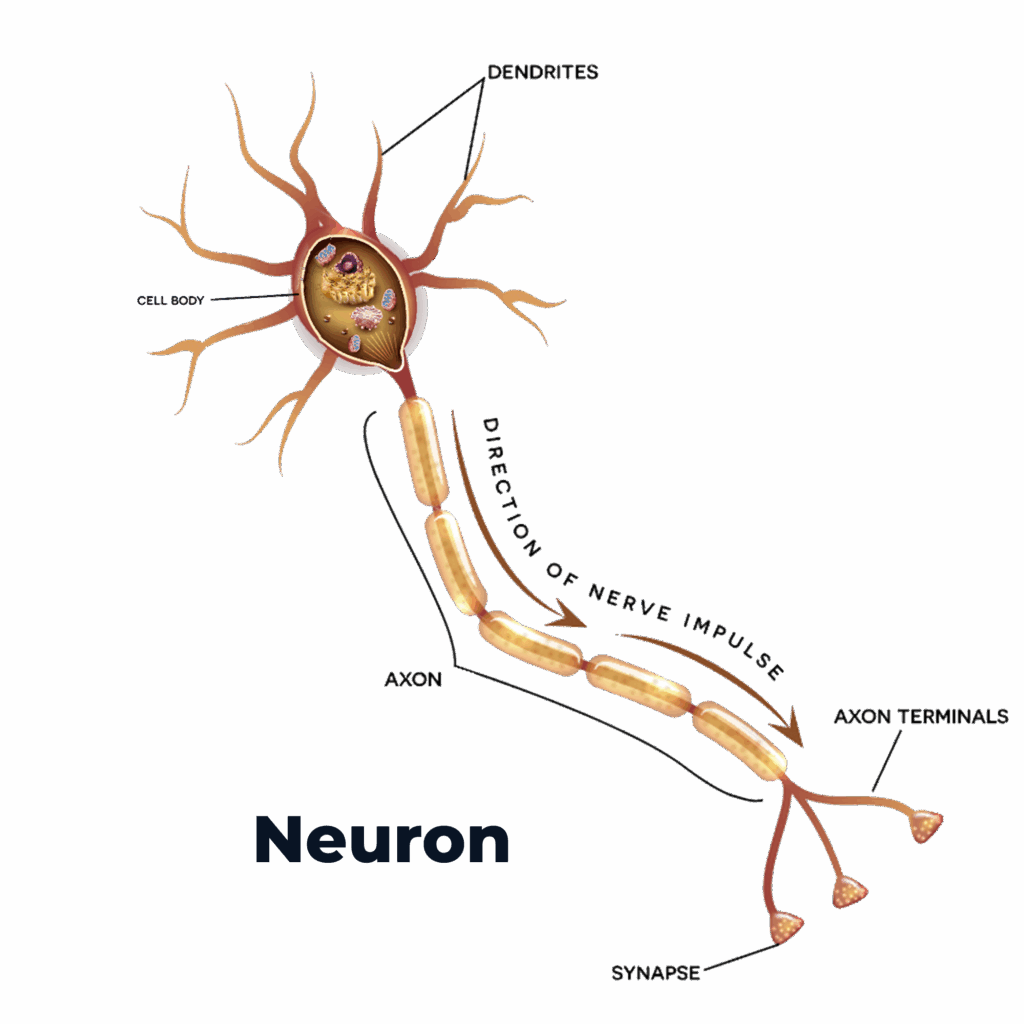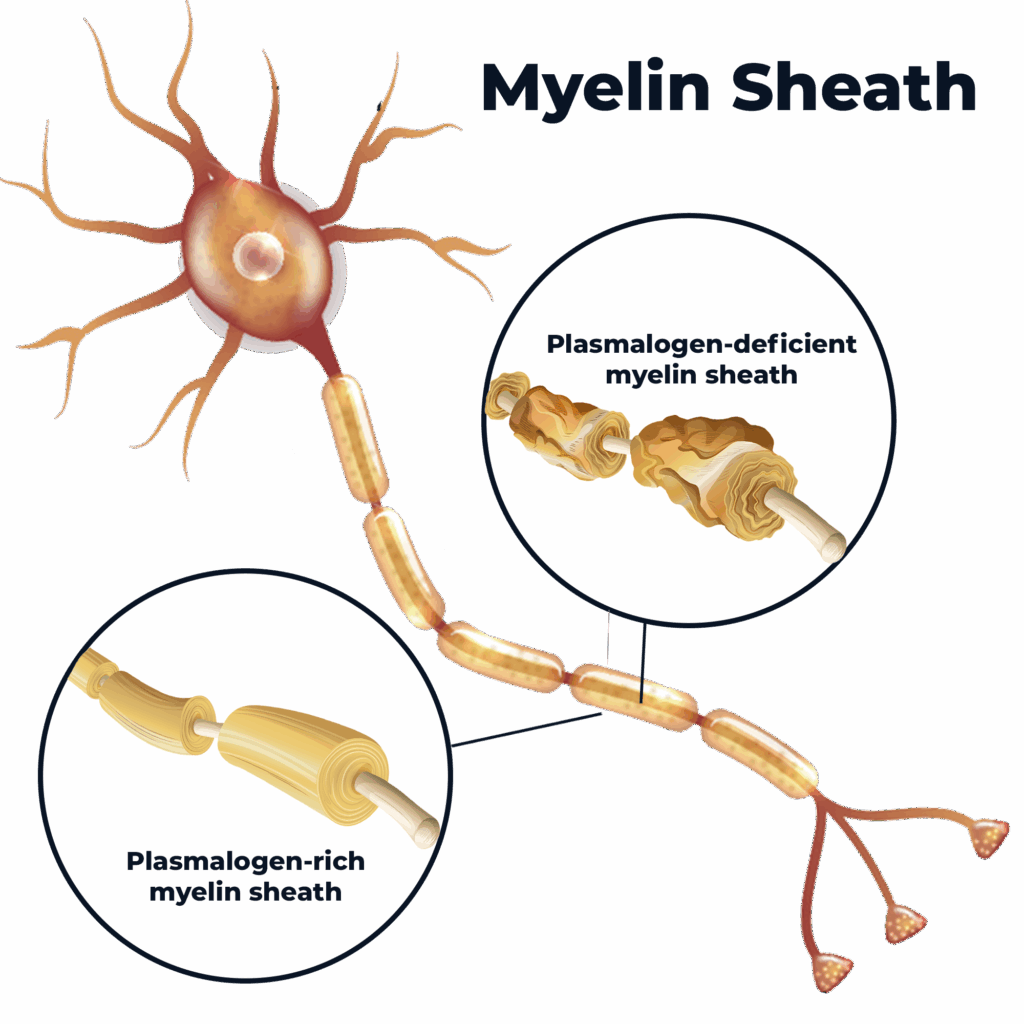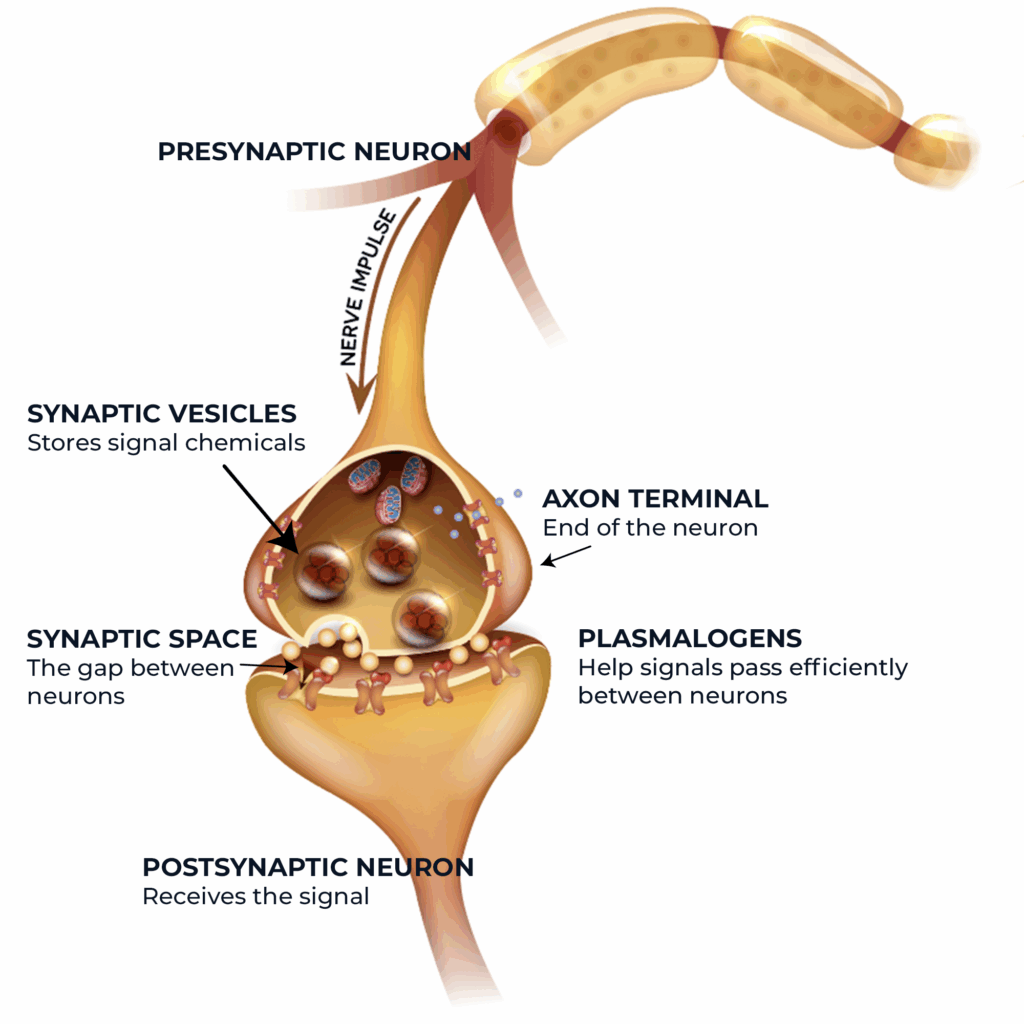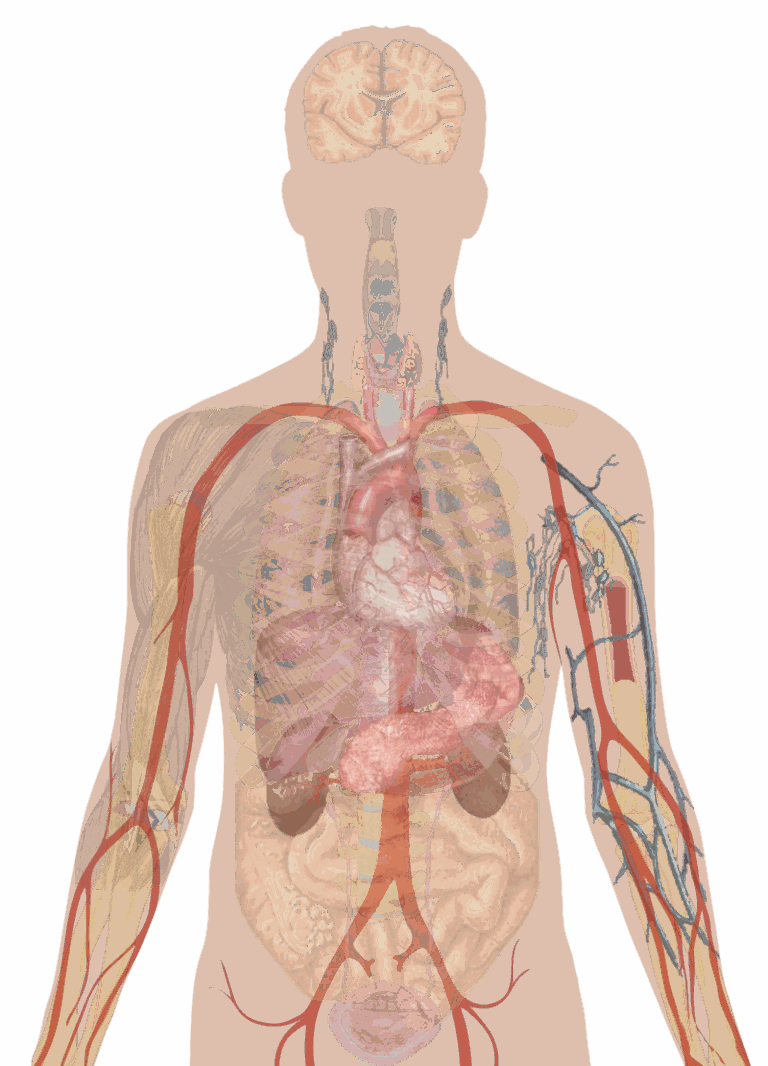Plasmalogens
What is biochemical restoration and why are plasmalogens critical to achieving and maintaining health?
Plasmalogens are special fats that are crucial for our bodies. They are like the bricks that build our cell membranes and act as a shield, protecting our cells from harmful stress. These unique fats are not just important; they are essential for brain health and the optimal functioning of all our cells.
To understand why plasmalogens are so crucial, we first need to explore their role in the building blocks of our brain – the neurons.
Neurons, those special cells in our brain and nervous system that enable us to think, feel, remember, and move, rely on plasmalogens for communication through their cell membranes. A deficiency of plasmalogens disrupts this communication, leading to issues with thinking, memory, speech, and movement, which are all too familiar signs of Alzheimer’s. It is, therefore, imperative to maintain healthy plasmalogen levels.

Each neuron has three main parts:
- Cell Body (Soma): Plasmalogens are like the architects of the cell membrane. They help maintain its structure and function, which is crucial for the neuron’s health and survival. Like a well-built house, a healthy cell membrane is essential for the neuron to function properly.
- Axon: Plasmalogens are involved in forming and maintaining the myelin sheath, which surrounds the axon and helps transmit electrical impulses efficiently.
- Dendrites: Plasmalogens are essential for the membranes of dendrites, aiding in the reception and processing of messages from other neurons.
Plasmalogens are vital for the overall health and communication functions of all parts of the neuron.
One of the areas where plasmalogens are essential is the myelin sheath, a protective covering around the axons of neurons.
The myelin sheath, which insulates nerve fibres, is crucial for efficiently transmitting neural signals. Plasmalogens play a vital role in the structure and function of the myelin sheath.
As we age, experience trauma such as concussions, or face neurological conditions like Parkinson’s, ALS, and MS—or developmental conditions such as autism, where white-matter/myelination challenges and inflammation can disrupt signal insulation and sensory processing—the myelin sheath can degrade, leading to cognitive and neurological decline. Because plasmalogens supply raw building materials for oligodendrocytes and act as powerful fat-soluble antioxidants that neutralize damaging peroxides from oxidative stress and inflammation, maintaining healthy levels of plasmalogens supports the integrity of the myelin sheath and promotes optimal brain function.

In addition to their role in the myelin sheath, plasmalogens are necessary for synaptic transmission, which allows neurons to communicate effectively.

Synaptic transmission is like a relay race in the brain. It’s how one neuron passes a signal, like a baton, to the next neuron. When synaptic function decreases, neurons shrink. When it stops, neurons die. Plasmalogens are the coaches in this relay race, ensuring the signals are passed on effectively, and the race keeps going.
A healthy functioning brain is very active. Each of the billions of neurons in your brain fires 70-100 times per second! High synaptic levels of plasmalogens are critical to maintaining optimal neuronal function.
Reduced levels of plasmalogens in the brain have been observed in various neurological diseases, such as Alzheimer’s, Multiple Sclerosis (MS), and Autism. Plasmalogen levels must remain healthy for optimal brain health and function.
The role of plasmalogens in different part of our body
Plasmalogens are the superheroes in our bodies, especially in our brains, hearts, and muscles. They help our brain cells communicate effectively, keep our heart pumping strong, and ensure our muscles work like a well-oiled machine. Plasmalogens also wrap and protect our nerves, just like a cozy blanket keeps us warm. So, they’re not just essential, they’re super essential in our body, ensuring everything works as it should.
Plasmalogens solidify and amplify the signals between neurons to optimize physical and cognitive performance.
Plasmalogens are vitally important in the membranes of neuronal tissues that link the brain and the retina. The higher the plasmalogen levels, the lower the risk of glaucoma.
Plasmalogens strengthen the heart muscle by reinforcing the cellular structure and function and preventing premature oxidation.
Plasmalogens promote and stabilize non-lamellar hexagonal phase structure and have significant antioxidant effects.
Plasmalogens are the building blocks of healthy cells, including building and strengthening the myelin sheath in neuronal cells.
People with high blood plasmalogens were 80% less likely to experience dementia and are proven to live longer.
Join The Mission
Fuel The Future of Restorative Health
Whether you are seeking care, supporting a loved one, or looking to invest in meaningful change, there is a place for you in our mission. Here’s how you may get involved:
Get Care
Apply for support for yourself or a loved one
Support the Mission
Donate, sponsor, or partner to expand access
Join the Movement
Subscribe or volunteer to stay involved



